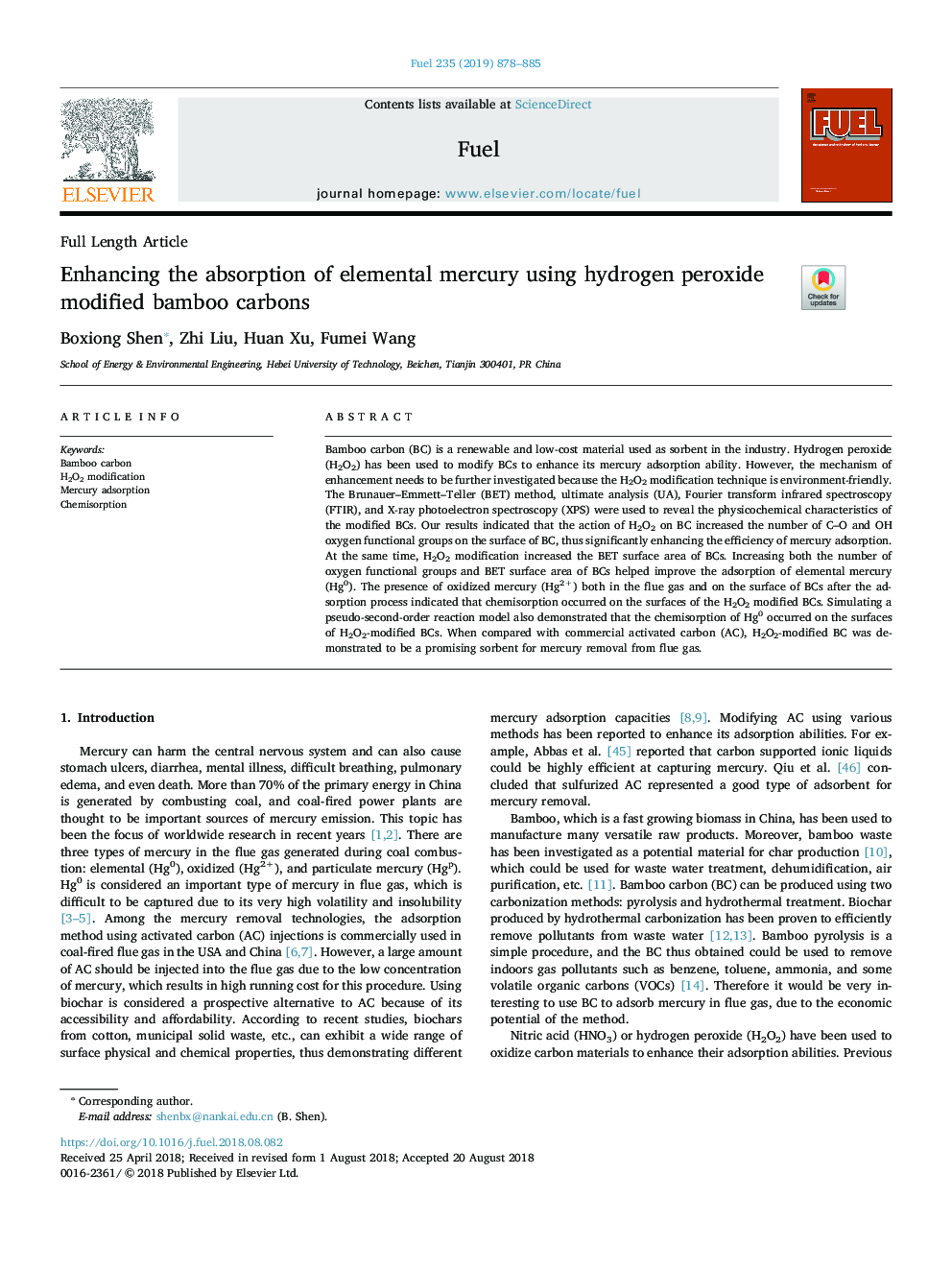| Article ID | Journal | Published Year | Pages | File Type |
|---|---|---|---|---|
| 11000554 | Fuel | 2019 | 8 Pages |
Abstract
Bamboo carbon (BC) is a renewable and low-cost material used as sorbent in the industry. Hydrogen peroxide (H2O2) has been used to modify BCs to enhance its mercury adsorption ability. However, the mechanism of enhancement needs to be further investigated because the H2O2 modification technique is environment-friendly. The Brunauer-Emmett-Teller (BET) method, ultimate analysis (UA), Fourier transform infrared spectroscopy (FTIR), and X-ray photoelectron spectroscopy (XPS) were used to reveal the physicochemical characteristics of the modified BCs. Our results indicated that the action of H2O2 on BC increased the number of C-O and OH oxygen functional groups on the surface of BC, thus significantly enhancing the efficiency of mercury adsorption. At the same time, H2O2 modification increased the BET surface area of BCs. Increasing both the number of oxygen functional groups and BET surface area of BCs helped improve the adsorption of elemental mercury (Hg0). The presence of oxidized mercury (Hg2+) both in the flue gas and on the surface of BCs after the adsorption process indicated that chemisorption occurred on the surfaces of the H2O2 modified BCs. Simulating a pseudo-second-order reaction model also demonstrated that the chemisorption of Hg0 occurred on the surfaces of H2O2-modified BCs. When compared with commercial activated carbon (AC), H2O2-modified BC was demonstrated to be a promising sorbent for mercury removal from flue gas.
Keywords
Related Topics
Physical Sciences and Engineering
Chemical Engineering
Chemical Engineering (General)
Authors
Boxiong Shen, Zhi Liu, Huan Xu, Fumei Wang,
